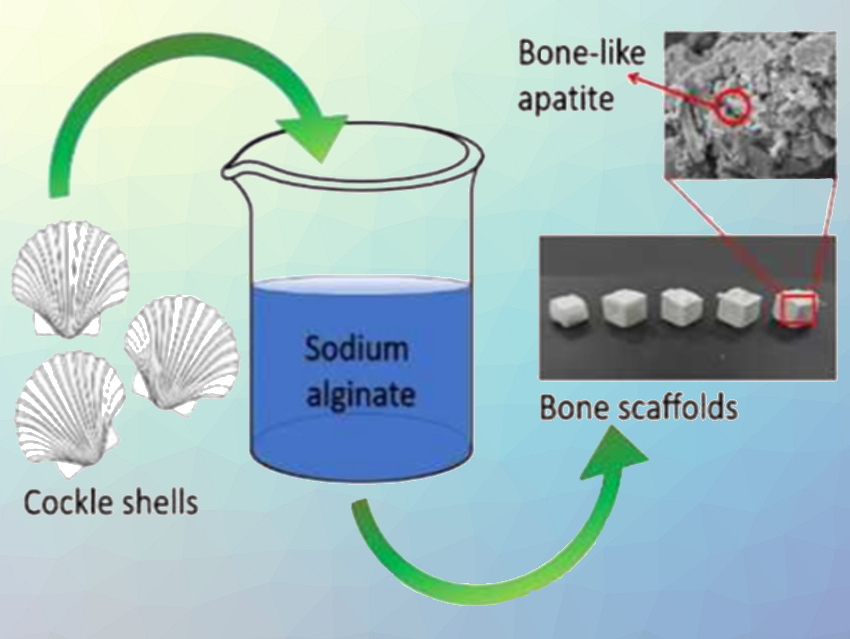Bone defects are often treated by the transplantation of bone tissue. To avoid problems like donor compatibility or disease transmission, templates that help the patient’s own bones regrow are a useful alternative to transplantation. Bone scaffolds are temporary templates to which bone cells can attach to during regeneration growth. They degrade over time to make space for the newly grown bone.
Sodium alginate (SA) is already in use as an instant gel for bone-tissue engineering because it is biocompatible, inexpensive, and biodegradable under physiological conditions. However, its poor mechanical strength needs to be improved by the incorporation of inorganic compounds such as CaCO3.
This CaCO3 could come from seashell waste. Siti Hajar Saharudin, Universiti Malaysia Pahang, and colleagues have prepared SA scaffolds supplemented with different concentrations of powdered cockle shells and studied the physicochemical properties and bioactivity of the resulting materials. The scaffolds have a lamellae structure with long pores.
Higher shell powder concentrations lead to a higher density of the scaffold, indicated by thicker lamellae, which is important for physical stress resistance. They also result in reduced porosity because the cockle-shell particles deposited in the SA matrix fill in the microstructure. This enhances the material’s compressive strength. The average pore sizes of the scaffolds with cockle shell powder are, however, greater than for SA alone, which is advantageous for cells growing on and into the structure.
Tests with simulated body fluid confirmed the material’s bioactivity: CaCO3 increases calcium-ion deposition on the scaffold in the form of bone-like apatite. Overall, the study indicates that cockle-shell-supported scaffolds have potential for use in medical treatment. To confirm that, however, experiments with live cell cultures will have to be performed.
- Fabrication of Bone Scaffolds from Cockle Shell Waste,
Siti Hajar Saharudin, Jun Haslinda Shariffuddin, Noor Ida Amalina Ahamad Nordin,
Chem. Eng. Technol. 2019.
https://doi.org/10.1002/ceat.201800518The article is part of a Chemical Engineering & Technology Special Issue on “Chemical Engineering and Industrial Biotechnology”.


